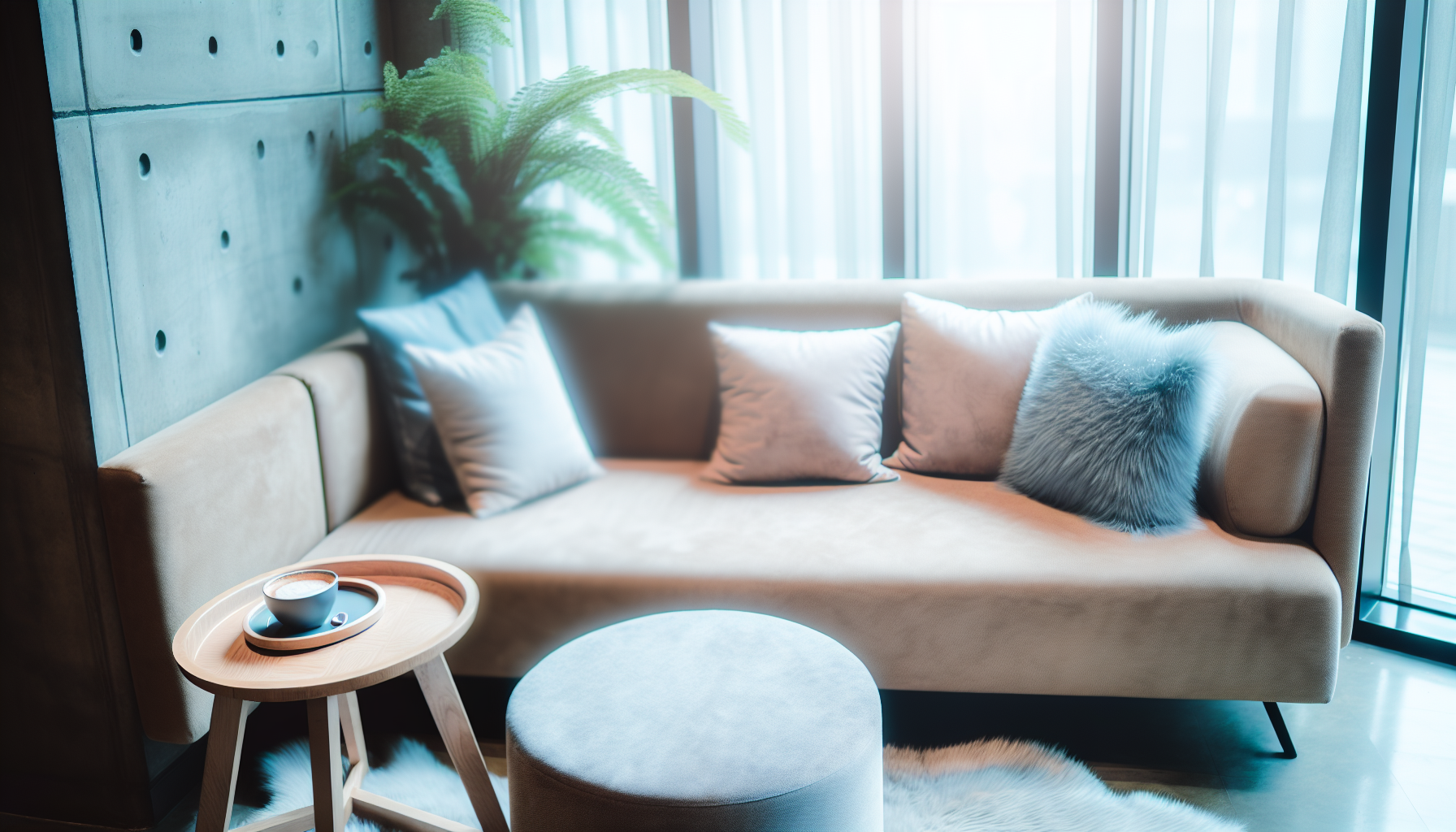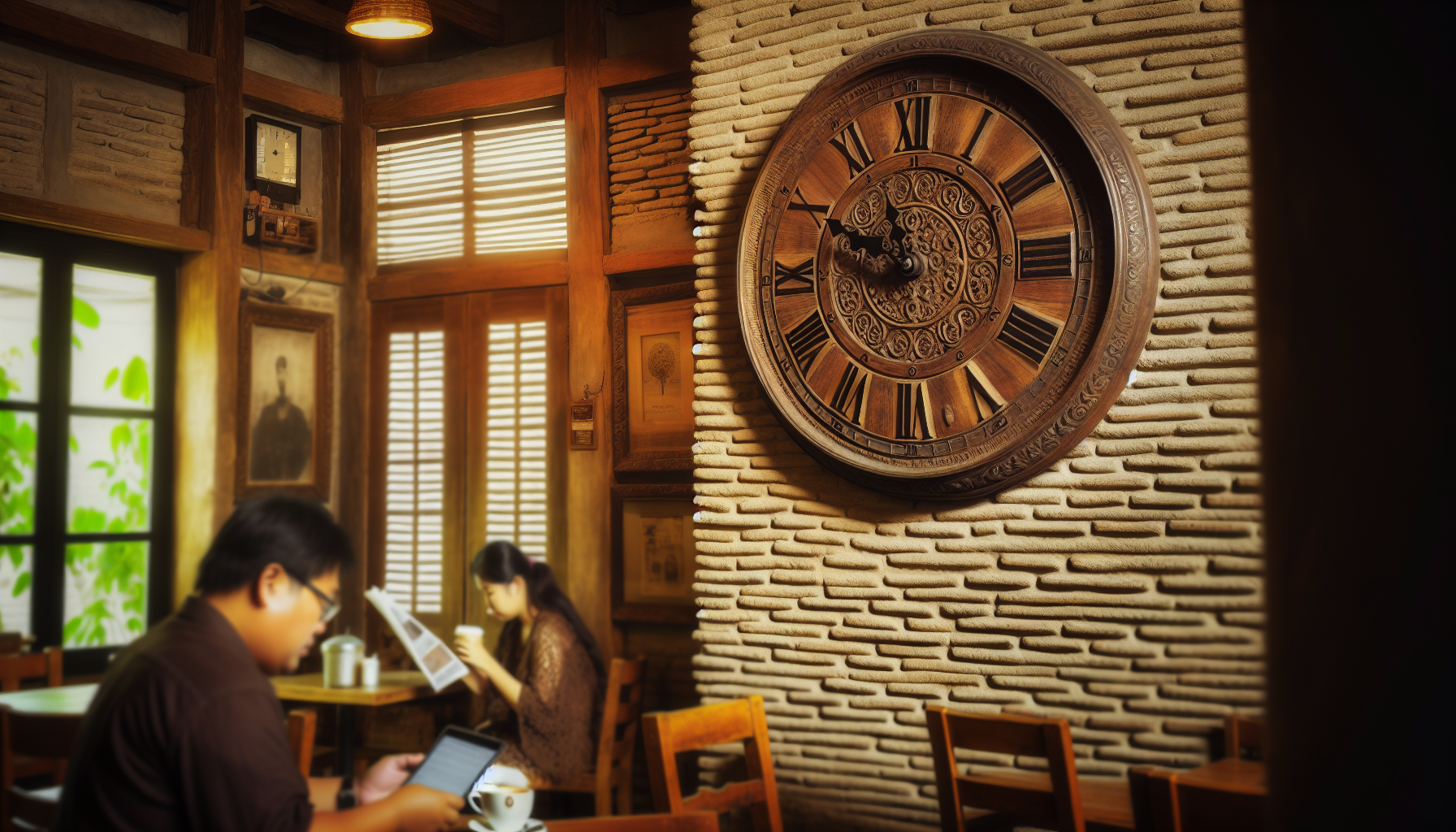
Ever wondered how to fight off afternoon drowsiness without a long break? A cafe nap is your answer. Bridging a short, strategic nap with your caffeine fix, it awakens your mind just in time for the caffeine to hit. This guide unpacks the cafe nap, revealing how to nail the timing, create the right environment, and avoid common pitfalls for a quick energy revival.
Key Takeaways
Cafe naps combine a quick caffeine intake with a 15-20 minute nap to boost alertness, clear adenosine from your brain, and prevent sleep inertia.
To nail the perfect cafe nap, drink your coffee fast, nap immediately after, and set the stage for sleep with a cool, quiet, and comfy environment.
Timing is everything – aim for a mid-day cafe nap and avoid it too close to bedtime to prevent sleep disruptions and align with your body’s rhythms.
Unveiling the Cafe Nap: A Rejuvenation Secret

A power nap, also known as a cafe nap, is the ultimate energy booster, as it ingeniously combines a caffeinated beverage, like coffee, with a short nap, with the aim of awakening you just as the caffeine kicks in to enhance your alertness. This clever combination can effectively alleviate tiredness, improve mental acuity, and boost overall performance, making it an effective strategy to combat sleepiness.
The effectiveness of a cafe nap greatly depends on timing. The process involves quickly finishing your coffee and then promptly settling down for a brief nap. This nap should ideally last between 15 to 20 minutes. By the time you wake up, the caffeine has entered your bloodstream, leaving you feeling rejuvenated and ready to tackle the rest of your day.
The Caffeine-Sleep Synergy: How Cafe Naps Work

The brilliance behind cafe naps lies in the strategic synergy between sleep and caffeine, and understanding the science behind coffee naps can help you maximize their benefits. A coffee nap leverages the benefits of sleep in clearing adenosine (a sleep-promoting chemical) from the brain, and the ability of caffeine to block the receptors of the remaining adenosine upon waking, thus enhancing alertness. In other words, when you take a coffee nap, the caffeine prepares your brain to be more alert post-nap by competing with adenosine for brain cell receptors.
The effectiveness of a coffee nap significantly relies on its timing. Strategic planning is necessary to prevent interference with your sleep schedule. The optimal duration is around 20 minutes, which is the time it takes for caffeine to reach the brain and begin its effects. This coincides with caffeine’s peak efficacy as you awaken, leaving you feeling refreshed and alert.
Understanding Adenosine and Caffeine Interactions
To fully appreciate the genius of cafe naps, let’s delve into the science behind caffeine and adenosine interactions. As you navigate through your day, adenosine, a sleep-promoting chemical in the brain, accumulates, leading to increased feelings of sleepiness as the day progresses. Enter caffeine. This wakefulness-promoting substance blocks adenosine from binding to its receptors, which would normally lead to sleepiness.
Specifically, caffeine affects the adenosine A2A receptors, particularly in the shell of the nucleus accumbens, playing a crucial role in promoting wakefulness. Grasping the interaction between adenosine and caffeine is fundamental to understanding how a cafe nap can increase alertness and decrease sleepiness.
Timing Your Caffeine Intake for Maximum Benefits
When it comes to reaping the full benefits of a cafe nap, timing plays a key role. After consuming caffeine, it takes about 45 minutes for it to be fully absorbed, peaking in the blood anywhere from 15 minutes to 2 hours. It is this journey of caffeine through the body that is key to the effectiveness of a cafe nap.
Specifically, caffeine takes about 15 to 20 minutes to reach the brain, where it blocks adenosine, making you feel less sleepy upon waking up. The wake-promoting effects of caffeine reach their peak approximately 30 minutes after intake. Therefore, timing your caffeine intake to coincide with these peaks can greatly enhance the rejuvenating effects of a cafe nap.
Perfecting the Art of the Cafe Nap

Now that you understand the science behind cafe naps, it’s time to master the art of taking one. Firstly, you should drink your coffee quickly, preferably black, and lie down immediately afterwards for a nap. This quick consumption of coffee ensures that the caffeine’s activation aligns with the end of your 15-20 minute nap.
Setting up an environment conducive to napping is also pivotal in enhancing the efficacy of a cafe nap. This can be done by:
lying on a bed
closing blinds and curtains
using aides like earplugs or an eye mask
using white noise to promote faster sleep onset
The optimal duration for a coffee nap is 20 minutes to receive the full restorative benefits without entering deeper, harder-to-wake-from stages of sleep.
Crafting Your Ideal Nap Space
The surroundings where you take your cafe nap can significantly influence its success. Here are some tips to create the perfect napping environment:
Choose a quiet location that is free from distractions
Arrange a comfortable napping space with room for stretching, accompanied by soft blankets and pillows
Keep personal items within reach
Ensure a comfortable room temperature for quick relaxation and sleep, as extreme temperatures can disrupt the napping experience.
In addition, consider using tools such as earplugs and eye masks to block out light and sound. You might also find it helpful to use white noise or relaxation apps to create a soothing background that helps in falling asleep faster and makes it easier to fall asleep.
Drinking Coffee for Optimal Nap Results
Your method of coffee consumption can also considerably affect your experience with a cafe nap. Quickly consuming hot coffee or opting for cold coffee or an espresso can help align the caffeine’s activation with the end of a 15-20 minute nap. Drinking black coffee without added sugars or flavors, such as milk or cream, ensures that caffeine is consumed in its most effective form.
For optimal results, it’s recommended to consume caffeine in the amount of around 200 mg, which is roughly the amount found in a cup of coffee and another cup of black coffee, or some energy drinks. Drinking caffeine on an empty stomach may provide a faster energy boost, beneficial for aligning the caffeine peak with the post-nap phase.
Balancing Act: Coffee Nap Duration and Timing

Striking the right balance between the duration and timing of a cafe nap is essential for optimizing its energy-enhancing benefits. The optimal duration of a cafe nap is strictly between 15 to 20 minutes. Exceeding 20 minutes can lead to deep sleep and result in sleep inertia, characterized by grogginess and disorientation upon waking.
To maximize the benefits of a coffee nap and prevent entering deep sleep, follow these tips:
Set an alarm for 20 minutes to ensure you wake up refreshed.
Drink coffee and take a coffee nap mid-day for optimal effectiveness.
Avoid taking a coffee nap close to bedtime to prevent sleep disruptions.
When to Schedule Your Cafe Nap
Choosing the best time for your cafe nap can considerably amplify its advantages. Consuming caffeine too late can cause sleep disruptions due to its stimulant effects lasting for up to six hours. To prevent interference with nighttime sleep, coffee naps should be taken well before bedtime, ideally no later than 1 PM.
Moreover, scheduling a coffee nap about 7 to 9 hours after waking up aligns with the body’s circadian rhythm, enhancing the benefits of the nap. Aligning your cafe nap with your body’s natural rhythms can help you get the most out of this energy-boosting technique.
Cafe Nap vs. Traditional Power Naps
When compared to traditional power naps, cafe naps offer superior benefits. Research has shown that cafe naps can lead to:
Fewer errors in tasks post-nap
Improved performance in driving simulators
A combination of caffeine and a short nap can significantly suppress sleepiness compared to napping or caffeine alone, exemplified by improvements in EEG activity, pointing to heightened cognitive performance.
Even in physically demanding situations, cafe naps come out on top. Sleep-deprived athletes who took a café nap showed better performance in sprinting tests compared to those who only consumed caffeine or took a nap by itself. This suggests that combining caffeine and a nap may have a synergistic effect on athletic performance. This highlights the comprehensive benefits of cafe naps for both mental and physical performance.
Potential Pitfalls: When Cafe Naps May Not Be Ideal
Like any strategy, cafe naps may not be ideal for everyone. Individuals with high caffeine sensitivity may not achieve the restorative benefits of a cafe nap due to increased chances of insomnia and restlessness after caffeine intake. Furthermore, people with certain medical conditions, such as:
chronic headaches
high blood pressure
digestive issues
specific sleep disorders
may experience worsening symptoms or discomfort from a cafe nap.
It’s important to note that cafe naps do not provide the same restorative benefits as a full night’s sleep. Therefore, they may not offer significant benefits to those suffering from substantial sleep deprivation. In such cases, prioritizing a good night’s sleep would be more beneficial.
Enhancing Your Cafe Nap Experience

Even after mastering the art of taking a cafe nap, there are ways to enhance your experience further. Little things, like washing your face after a nap, can reduce grogginess and help restore alertness more quickly. Upon hearing the alarm, get up right away to prevent lingering grogginess and take advantage of the energy boost provided by the cafe nap.
If you find yourself taking longer naps, allow for a recovery period of at least 30 minutes to overcome sleep inertia and fully benefit from the nap. And remember, a cafe nap can be refreshing and boost energy levels even if one does not fall completely asleep, due to the restful state coupled with the intake of caffeine.
Hydration and Post-Nap Activities
Rehydration is vital after your cafe nap. A simple way to achieve this is by drinking a glass of water.
Post-nap activities can also contribute to the effectiveness of your cafe nap. Spending time in bright light following a nap enhances alertness and facilitates the waking process. Whether it’s stepping outside in the sun or sitting near a bright light source, this can help alleviate any residual feelings of sleepiness.
The Science Behind Cafe Naps
Strong scientific research underpins the concept of cafe naps. Studies have shown that cafe naps can lead to:
Fewer errors in tasks post-nap
Improved performance in driving simulators
Reduced subjective sleepiness
Mitigated driving impairments in tired individuals
The benefits of a quick nap in a cafe typically last around one hour.
During sleep deprivation, a prophylactic nap combined with caffeine, also known as a caffeine nap, can help individuals maintain nocturnal alertness and performance effectively, compared to a nap without caffeine. Biological markers such as results from the Multiple Sleep Latency Test and Oral Temperature indicate that caffeine naps help maintain these at near baseline levels, suggesting an effective countermeasure against sleep-related performance decline.
Summary
In summary, the cafe nap is a powerful tool that combines the restorative benefits of a quick nap with the energizing effects of caffeine. By understanding the science behind it, properly timing your caffeine intake, crafting an ideal nap space, and knowing when to schedule your nap, you can maximize the benefits of a cafe nap. However, it’s essential to remember that cafe naps are not a substitute for a good night’s sleep and may not be suitable for everyone. Nonetheless, for those who can benefit from them, cafe naps can be a secret weapon for boosting energy and productivity.
Frequently Asked Questions
What is a coffee nap called?
A coffee nap is called a “caffeine nap.” It’s when you drink a cup of coffee and then take a short nap to maximize the benefits of both caffeine and sleep.
Do coffee naps really work?
Yes, coffee naps can enhance performance and mood, particularly for night shift workers and drivers. However, they cannot replace a good night’s sleep.
When is the best time to take a cafe nap?
The best time to take a cafe nap is mid-day, ideally no later than 1 PM, to align with your body’s natural circadian rhythm. This ensures you feel refreshed and energized for the rest of the day.
How long should a cafe nap last?
Hey there! Aim for a cafe nap lasting between 15 to 20 minutes to avoid deep sleep and get the most out of it.
Are cafe naps suitable for everyone?
Cafe naps may not be suitable for everyone, particularly those with high caffeine sensitivity or certain medical conditions. Remember, they are not a replacement for a full night’s sleep.

